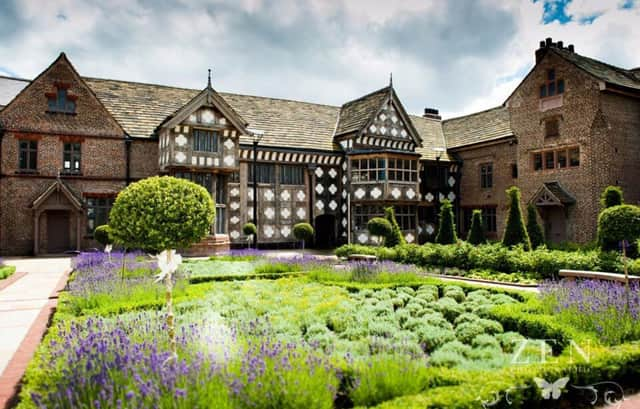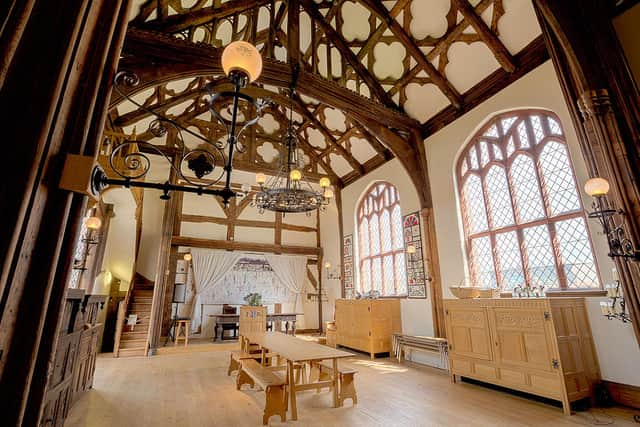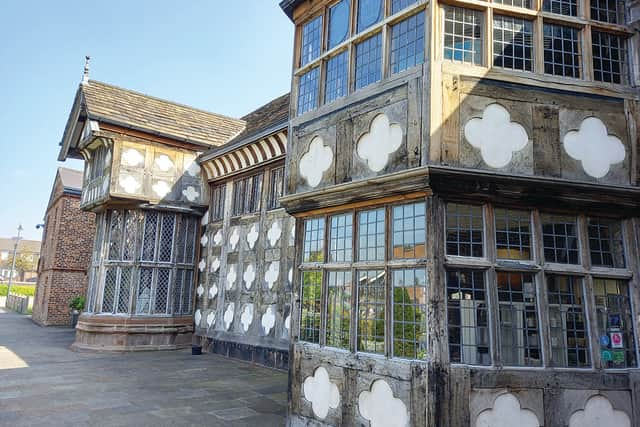Fans of historic houses will enjoy one of Salford’s oldest surviving buildings, Ordsall Hall.


The historic remnant of yesteryear now stands in stark contrast to the modern buildings that have grown up around it in recent years in the heart of Salford.
The contrast of old and new gives the old Hall the sense of a stalwart survivor, letting people know that this grand city has a fascinating past as well as a determined presence.
Advertisement
Hide AdAdvertisement
Hide AdOrdsall Hall — the current building dating from 1512 — gives visitors the chance to see how the wealthy landowners of the past lived.
This popular attraction is open to the public who can find out more about its long history, its ghosts, its supposed link to the Gunpowder Plot and that it once had the most hearths in the whole of Salford.


Run by Salford Council, Ordsall Hall can be found on Ordsall Lane in the city. It is open all year from 10am to 4pm on Mondays to Thursdays and 1pm to 4pm on Sundays and entry to the house and attractive grounds is free.
There are special events and rooms can be hired for private occasions.
Advertisement
Hide AdAdvertisement
Hide AdThere was a hall on the site 750 years ago though the oldest surviving parts today are from the sixteenth century. Compared to many old buildings it feels quite spacey inside, one could even say homely, and many families have made it their home over the years.
Ordsall first gets a mention in records in 1177 and it is believed by historians that there was a dwelling on the site in 1251 when the Earl of Derby, William de Ferrers purchased the land.
The most famous family linked to the house was the Radclyffe clan who took it over around 1335. A dispute about ownership made things confusing for around 20 years until Sir John Radclyffe established it belonged to him 1354. He gained 120 acres of land.
After a decade, Sir John expanded the property to incorporate a new chapel. By 1380 the impressive building had a hall, five chambers, a kitchen, two stables, three granges, a dovecote, an orchard and a windmill, together with 80 acres of arable land and six acres of meadow.
Advertisement
Hide AdAdvertisement
Hide AdThe current Great Hall was constructed in 1512. It was one of the largest buildings of its type in the North West of England.
A brick house was built in 1639 at the west end and at right angles to the timber framed building which may have been the home of the bailiff because the Radclyffes were no longer using Ordsall as their main residence.
Sir Alexander Radclyffe got into monetary difficulties, partly brought on by being a Royalist in the English Civil War. His son, John, had to sell the house to Colonel John Birch in 1662.
At the end of the seventeenth century the estate was sold to the Oldfield family of Leftwich, which is near Northwich, and in 1704 to John Stock, a trustee of Cross Street Chapel. His son’s executors sold the property in 1756 to Samuel Hill of Shenstone, Staffordshire, on whose death two years later it passed to his nephew, Samuel Egerton of Tatton.
Advertisement
Hide AdAdvertisement
Hide AdIt is believed that the Stock family were the last owners to live in Ordsall Hall. When they lived there the central section of the building was described as having a large hall, lounge dining room, a chapel, six rooms on a floor, brewhouse, large courts, and a stable, with other features to boot. It was clearly still an important and impressive structure.
There were further developments when the building came under the ownership of Samuel Egerton when parts of the building were destroyed to create new flooring and rooms. The east wing may have been demolished at around this time.
Ordsall Hall was occupied by various families, including from 1872 to 1875 by Pre-Raphaelite style painter Frederic Shields who told John Ruskin that the property was “the happiest refuge I have ever nested in.”
The modern industrial world began to encroach on Ordsall Hall in the nineteenth century so that by the end of the 1890s it was\!q surrounded by factories and housing, a stark contrast to the fields and woods of the past. In 1875 it was let to Haworth’s Mill to be used as a working men’s club, with changes made to offer up a gymnasium, billiards, a skittle alley and a bowling green. Certainly a major change from its well-bred past.
Advertisement
Hide AdAdvertisement
Hide AdIn 1897 it opened as a clergy training school, with major restoration. Later the hall building became a social club and then was used in the war effort from 1940.
The Hall was bought by Salford Corporation in 1959 and, following major restoration work, was finally opened to the public in April 1972 as a period house and local history museum.
A major restoration took place between 2009 and 2011 at a cost of £6.5 million, saving it for future generations.


It is a fascinating history full of colourful characters and a tour around the place will introduce a visitor to the people and their lives over the centuries.
Advertisement
Hide AdAdvertisement
Hide AdYou can get a great sense of Tudor times and an impression of how important, wealthy and (for the times) modern the inhabitants of the hall were.
You can discover the Great Hall, the kitchen, the Star Chamber and other rooms to get a feel for what happened here. The Frederick Shields Gallery holds temporary art exhibitions to enjoy too.
There are other attractions to discover such as occasional theatre performances, demonstrations such as weaving, and other craft workshops.
Once you have explored inside, there is plenty of space outside to wander around in too in the form of a late Tudor knot garden, an orchard with historic fruit trees, a herb garden and even a World War One allotment.
There are stone artefacts to see, as well as sculpture.
Advertisement
Hide AdAdvertisement
Hide AdStaff are friendly and helpful and there is car parking on site. Ordsall Hall is well signposted and accessible by public transport and from the motorway system around the Manchester and Salford conurbation.
The lovely building certainly stands out and is an attractive construction amongst the more modern architecture which form its current neighbours but visitors get a sense of calm at the visitor attraction despite its urban location. It is an oasis of peace, and a fascinating one at that.
We should all be pleased that Ordsall Hall has been saved for everyone to enjoy. Its up-and-down past meant it could easily have disappeared like so many glorious old buildings.
Ordsall Hall is well worth a visit, perhaps as part of a trip away to enjoy the many attractions of Salford and Manchester.
FURTHER INFORMATION:
Address: 322 Ordsall Lane, Salford M5 3AN.
Telephone: 0161 872 0251.
Email: [email protected]
Website:: https://ordsallhall.com/